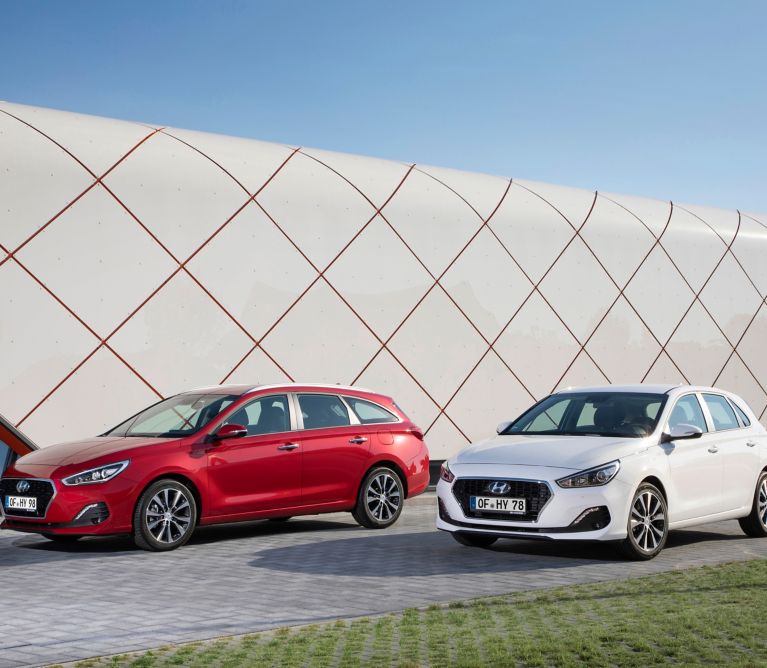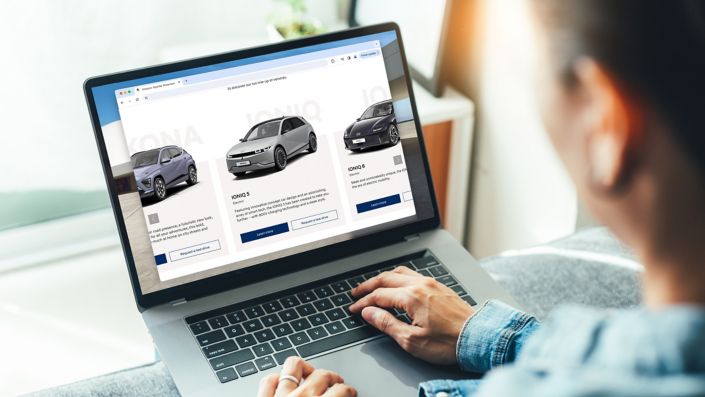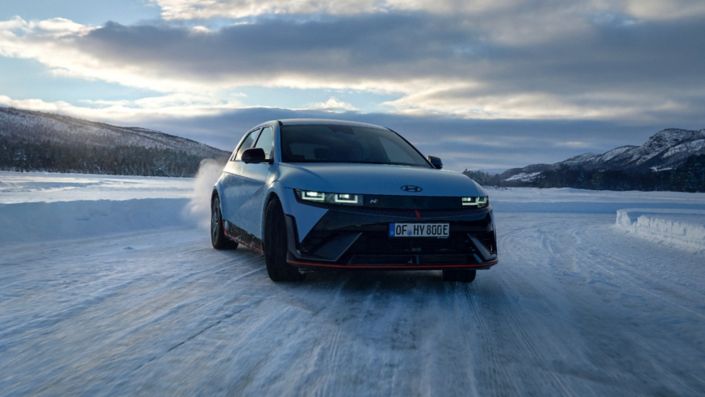Choice of Powertrains
Customers have the option of three petrol engines. In addition, the new Smartstream 1.6-litre diesel engine makes the Hyundai i30 five-door, i30 Wagon, i30 Fastback, i30 N and i30 N Line compliant with the latest Euro 6d-Temp emission standards . All engines come standard with Integrated Stop and Go (ISG) system for increased efficiency.
In the gasoline range, customers can choose between the new 1.4 T-GDI turbocharged four cylinder engine with 140 PS (fuel consumption combined: 5.5 - 4.8 l/100 km; urban: 6.6 - 5.9 l/100 km; extra-urban: 5.0 - 4.1 l/100 km; CO2 emissions combined: 125 - 109 g/km*), the 1.0 T-GDI turbocharged three cylinder engine with 120 PS (fuel consumption combined: 5.0 - 4.5 l/100 km; urban: 5.8 - 5.4 l/100 km; extra-urban: 4.6 - 4.0 l/100 km; CO2 emissions combined: 115 - 103 g/km*) or the 1.4 MPI four cylinder with 100 PS (fuel consumption combined: 5.6 - 5.4 l/100 km; urban: 6.8 - 6.6 l/100 km; extra-urban: 4.9 - 4.8 l/100 km; CO2 emissions combined: 130 - 126 g/km*).
The newly-developed Smartstream 1.6-litre four-cylinder diesel engine reduces CO2 emissions and improves fuel efficiency, and comes with three different power outputs: 96 PS (70kW) available with a 6-speed manual transmission (6MT) (Fuel consumption combined in NEDC conversion: 3.9 – 3.8l/100km; CO2 emissions combined in NEDC conversion: 104 – 99g/km), 116 PS (85kW) available with 6MT (Fuel consumption combined in NEDC conversion: 4.3 – 3.8l/100km; CO2 emissions combined in NEDC conversion: 112 – 99g/km) or the 7-speed dual clutch transmission (7DCT) (Fuel consumption combined in NEDC conversion: 4.1 – 4.0l/100km; CO2 emissions combined in NEDC conversion: 107 – 105g/km), and 136 PS (100kW) with 6MT (Fuel consumption combined in NEDC conversion: 4.4 – 4.1l/100km; CO2 emissions combined in NEDC conversion: 116 - 108g/km) or 7DCT (Fuel consumption combined in NEDC conversion: 4.3 – 4.1l/100km; CO2 emissions combined in NEDC conversion: 113 – 107/km).
Along with the new Smartstream engine, the company equips the i30 five-door, i30 Wagon and i30 Fastback diesel variants with exhaust fluid after-treatment systems. The diesel exhaust fluid, a mix of urea and water, contributes to decreasing nitrogen oxide emissions. At the same time, all petrol engines of the i30 line-up have been equipped with a gasoline particulate filter.
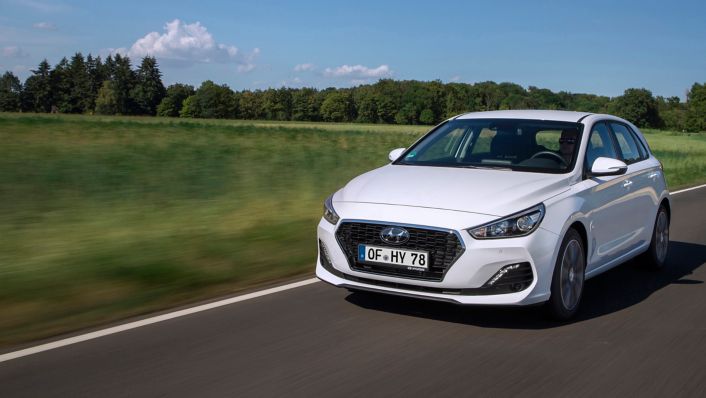
The 1.4 T-GDI – Light, Frugal and Fun to Drive
The 1,353 cc four-cylinder turbocharged petrol engine is significantly lighter than its predecessor, the Gamma 1.4-litre engine. The unit’s base weight has been reduced by 14 kg and it also boasts greater efficiency and power, delivering 140 PS and 242 Nm of torque with fuel consumption and CO2 emissions as low as 4.8 l/100 km* and 109 g/km* (combined).
The engine incorporates a high-pressure single-scroll turbocharger integrated in the exhaust manifold to improve operational efficiency. The relocated and re-engineered turbo means throttle response time and low-end torque have improved. The new design injects fuel directly inside the cylinder, improving combustion rates for better power and fuel efficiency.
The new, turbocharged 1.4-litre T-GDI petrol engine is offered with the 6MT or the 7DCT, which gives a choice of fully automatic operation or manual gear changes.
The 1.0 T-GDI – Three-Cylinder Dynamism
The 1.0 T-GDI engine, developed by the Namyang Technical Centre in Korea in collaboration with the European Technical Centre in Germany, with 120 PS and 171 Nm provides a perfect combination of dynamism and efficiency with fuel consumption and CO2 starting from as low as 4.5 l/100 km* and 103 g/km* (combined).
A turbocharger with an electronically-controlled waste-gate actuator improves fuel efficiency by lowering pumping losses as well as improving throttle response and low-end torque. The unit features a six-hole GDI injector, pressured to a higher-than-average 200 bar, securing a clean combustion and improving fuel economy and emissions.
To keep the engine unit as small as possible, the exhaust manifold is integrated in the cylinder head and can therefore be cooled efficiently using the cylinder head water-cooling system. These efforts result in faster warm-up of the catalyst and ultimately in improved real-world fuel consumption and emissions.
The 1.0 T-GDI is offered with the 6MT.
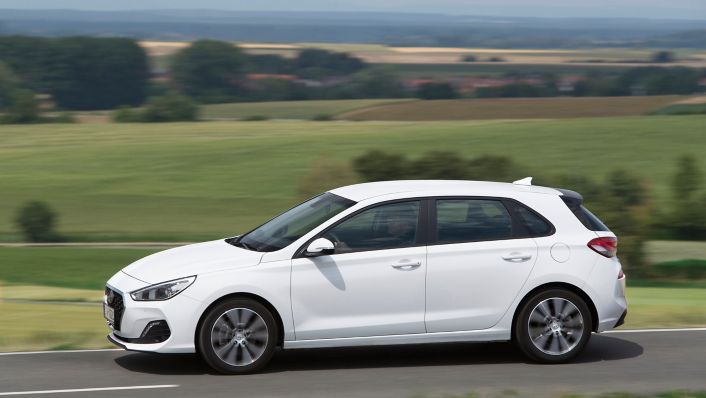
New 1.6-litre Turbo Diesel: One Engine, Three Outputs
For customers looking for a diesel engine, the New Generation Hyundai i30 is offered with an upgraded Smartstream1.6-litre four-cylinder turbo engine with three outputs: the ‘standard power’ version with 96 PS, the ‘mid power’ version with 116 PS and the ‘high power’ version with 136 PS, delivering a maximum torque of 280 Nm or 300 Nm (‘high power’ version with DCT). Both the mid power and high power version can be selected with the 6MT or 7DCT.
The Seven-Speed Dual-Clutch Transmission
Hyundai Motor introduced its first seven-speed double-clutch transmission in 2015, combining the benefits of automated and manual transmissions. The 7DCT provides an improvement in fuel consumption and CO2 emissions of up to 20% compared to a conventional six-gear automated transmission, while acceleration performance could be increased by up to 10%.
The 7DCT consists of two dry clutches and an actuator for each clutch. Engine power is transferred independently into the odd and even gear train to always be ready to shift into the next gear without any torque interruption. For optimised responsiveness the electric motor-driven actuator is applied, while external dampers improve the noise, vibration and harshness during driving.
In combination with the 7-speed dual clutch transmission the New Generation i30 offers two drive modes: Normal and Sport. In sport mode there is a different shift pattern holding gears longer before shifting, the steering provides a sporty feel and the throttle response is adapted.
* Based on NEDC Test Cycle. Fuel Consumption and emission values vary depending on tyre size and transmission type.
Ride and Handling
The New Generation i30 has been developed and tested in Europe performing accelerated durability tests and dynamic testing on the most demanding race track in the world, the famous Nürburgring Nordschleife, as well as undergoing rigorous public-road testing throughout Europe from the coldest winter testing conditions in Sweden to trailer testing in the Alps and hot weather testing in the south of Spain to ensure that the high expectations of European customers are met.
The development engineers have defined the characteristics of the New Generation i30; precise, natural and connected steering; agile, responsive and predictable handling; a dynamic ride without compromising comfort with good body control. Compared to its predecessor the motor-driven power steering is 10% more direct and the vehicle response is 15 milliseconds faster.
The new chassis of the New Generation i30 has been completely reworked to provide a dynamic and compliant driving experience with high levels of ride comfort. Contributing to this is the standard multi-link rear suspension for all versions with a dual lower arm and the performance-oriented shock absorbers.
Braking performance is optimised by an increased brake diameter size to 288 mm in the front allowing the driver to apply a stronger braking force especially in hot wheel conditions.
Strong and Lightweight Body: 53% Advanced High-Strength Steel
Hyundai Motor is the only car manufacturer to make its own steel for the production of its vehicles globally with great benefits for the New Generation i30 featuring a strong and light body that enhances the dynamic performance and increases passenger safety.
The quantity of Advanced High Strength Steel has almost doubled to 53% while at the same time reducing the weight of the body-in-white by 28 kg and increasing rigidity by 22 % in comparison to its predecessor. In production, the structural adhesives length has been increased to 112 m, improving stiffness while reducing weight.

